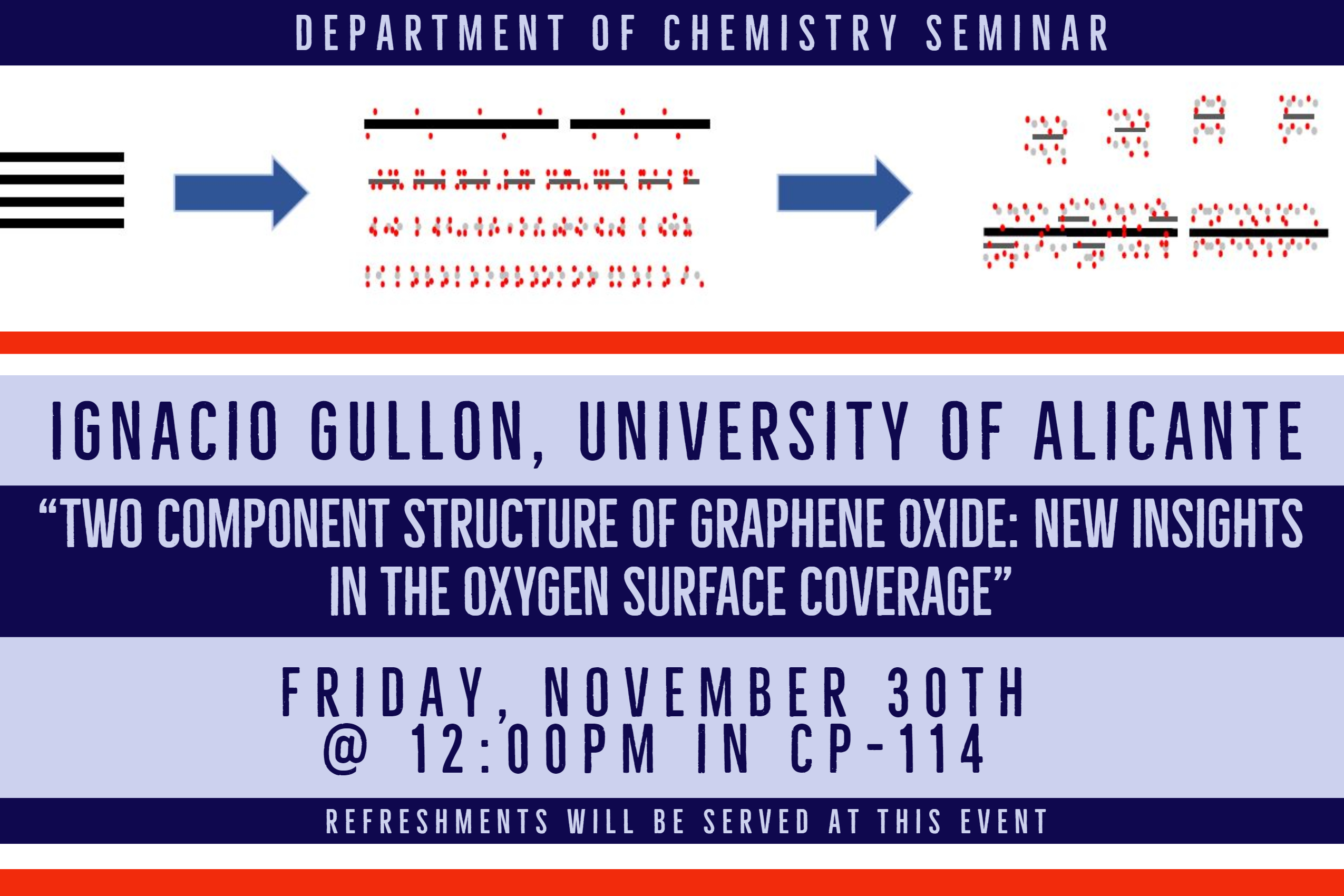Abstract:
The structure of graphene oxide (G-O) is still a challenging topic for developing useful and novel applications, where a compatibility, affinity or even covalent linkage is required at the interface. There is still a no consensus about the essential details, especially relating to the epoxy groups as main complexes in the basal plane, as well as the simultaneous presence of G-O sheets and oxidative debris (OD), with large difference in their oxygen content between both entities. The present seminar deeps on this topic, through the characterization the base-washed G-O (bwGO) sheets, the OD and the humic fraction of the OD obtained by base digestion, when the parent G-O was previously dried or not, and previously sonicated or not. It was found that the presence of lactols at graphene edges as the dominant surface complexes agrees with all the characterization techniques, and also explains the high decrease of oxygen surface coverage in bwGO, where no carboxylic group removal was observed. These findings suggest that the Hummers-Offeman reaction produces a chemical scissor-effect during the water/hydrogen peroxide quenching step, yielding a broad size distribution of G-O sheets, with little in-plane oxidation, and the vast majority of edges being oxidized to form 7-ring lactol-type heterocyclic functionalities. Therefore, OD consists essentially of the very low sheet-size fractions, highly oxidized poly aromatic hydrocarbons, with a very high oxygen:carbon ratio due to the very high edge to weight ratio.

